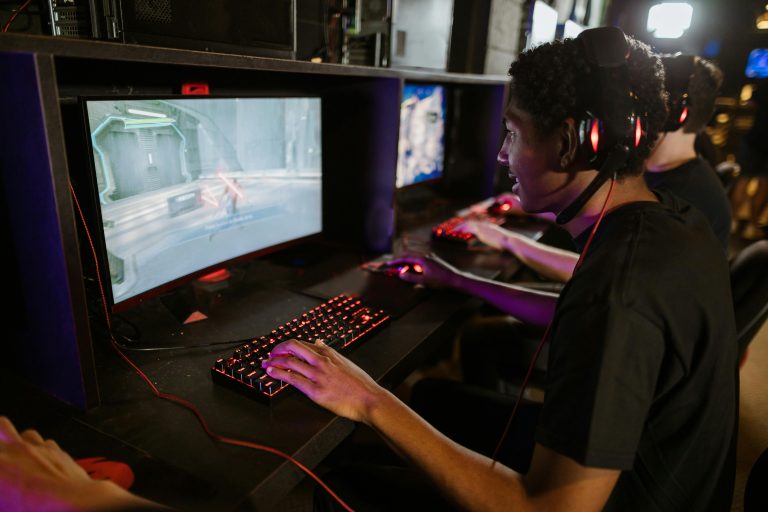
The landscape of game development is undergoing a seismic shift. Gone are the days when creating immersive, dynamic, and intelligent worlds was the sole domain of massive teams with years of development time. Today, artificial intelligence is not just a tool for creating smarter non-player characters; it is fundamentally reshaping the very engines that power our digital creations. From automating tedious tasks to generating entire ecosystems, AI-powered game engines are democratizing development and unlocking new frontiers of creativity. This revolution is moving at a breakneck pace, and for developers looking to stay ahead of the curve, understanding these platforms is no longer optional—it’s essential. Here are the top AI-infused game engines and tools that are defining the future of interactive entertainment in 2024.
The Vanguard of AI Game Development
This first category represents the new wave of development platforms built from the ground up with AI as a core tenet. They are challenging traditional workflows and offering a glimpse into a future where developers and AI collaborate as creative partners.
Promethean AI
Promethean AI stands out by acting as an artificial assistant that collaborates with developers. Instead of manually placing every asset, you can simply ask Promethean to “build a sci-fi barracks” or “furnish a medieval tavern,” and it will generate multiple options compliant with your project’s art direction. It learns from your preferences, making its suggestions increasingly accurate over time. This engine is a powerhouse for rapid prototyping and environment building, drastically reducing the time spent on asset placement and scene composition.
Unity Muse
A giant in the traditional engine space, Unity has aggressively integrated AI through its Muse platform. Muse is a suite of AI-powered features designed to accelerate creation. With Muse Chat, developers can get answers to Unity questions and write code through natural language prompts. Muse Sprite allows for the generation of 2D sprites from text descriptions, while its behavior and animation tools are poised to simplify complex tasks. It represents a robust, enterprise-level approach to weaving AI directly into a familiar and powerful development environment.
Unreal Engine 5 with AI Integrations
While not a purely “AI engine” itself, Unreal Engine 5’s open framework and powerful tools make it the perfect foundation for cutting-edge AI integration. Epic Games’ own MetaHuman Creator uses AI to generate hyper-realistic digital humans in minutes. Furthermore, plugins like NVIDIA’s Omniverse Connector allow developers to leverage AI-powered tools for physics simulation and real-time collaboration. UE5’s robust Blueprints visual scripting system also simplifies the implementation of complex AI behaviors, making it a top choice for developers who want to build custom AI systems on a world-class rendering foundation.
AI-Powered Content Generation Platforms
These platforms may not be full-fledged game engines with physics and rendering pipelines, but they are indispensable AI tools that integrate seamlessly into any developer’s workflow to solve specific, time-consuming problems.
Leonardo.Ai
A cornerstone for indie developers and studios alike, Leonardo.Ai is a powerful image generation platform specifically fine-tuned for game asset creation. Developers can generate concept art, textures, environment pieces, and UI elements from text prompts. Its ability to train on your own artwork ensures brand consistency, making it an invaluable tool for creating a cohesive visual style without a massive art team.
Inworld AI
For narrative-driven games, Inworld AI is a game-changer. This platform is dedicated to creating advanced AI characters with rich backstories, personalities, and emotions. Developers can design characters that don’t just recite pre-written dialogue but can converse intelligently with players, remember past interactions, and respond dynamically to the world around them. It seamlessly integrates with major engines like Unity and Unreal, bringing unprecedented depth to NPC interactions.
Layer.ai
Layer.ai focuses on a critical but often overlooked aspect of game development: generating massive, unique 3D assets. Using AI, it can create endless variations of props, buildings, and environmental details. This is crucial for building large, explorable worlds without noticeable asset repetition, enhancing immersion and visual diversity while saving immense amounts of modeling and texturing time.
Specialized AI Tools for Enhanced Gameplay
Beyond content creation, several engines and SDKs specialize in infusing gameplay itself with sophisticated, adaptive intelligence.
Convai
Similar to Inworld, Convai specializes in creating NPCs that can see, hear, and talk. Its characters are designed to be placed in real-time environments where they can understand and describe their surroundings, perform actions based on player commands, and engage in meaningful, context-aware conversations. It’s a powerful tool for building living, breathing worlds populated by seemingly intelligent beings.
Replica Studios
Voice acting can be prohibitively expensive and logistically challenging. Replica Studios offers an AI-powered solution with a vast library of ethically sourced, AI voices. Developers can type dialogue and have it delivered in a chosen voice with authentic emotion and intonation, all available via an API for Unreal and Unity. This democratizes high-quality voiceover for projects of all sizes.
NVIDIA DLSS & Ray Reconstruction
This is AI working its magic on the technical side. NVIDIA’s Deep Learning Super Sampling (DLSS) uses AI and neural graphics to boost frame rates significantly while generating beautiful, sharp images. Its Ray Reconstruction technology further enhances ray-traced visuals by using an AI network to replace hand-tuned denoisers, resulting in higher-quality reflections, transmissions, and shadows. For any developer targeting high-fidelity graphics, leveraging these AI technologies is crucial.
Embracing the AI Revolution
The integration of AI into game development is not about replacing developers; it’s about empowering them. These engines and tools are handling the repetitive, time-intensive tasks that often bottleneck creativity. By automating asset generation, environment building, code debugging, and character behavior, AI allows developers to focus on what truly matters: design, storytelling, and creating compelling player experiences. The barrier to entry is lowering, while the ceiling for what a small team can achieve is rising exponentially.
The key for developers in 2024 is to adopt a mindset of collaboration with these new AI partners. Experiment with different platforms, integrate them into your established workflows, and discover how they can augment your unique strengths. The future of game development is a symbiotic relationship between human creativity and artificial intelligence, and these engines are the first, thrilling step into that new frontier.






